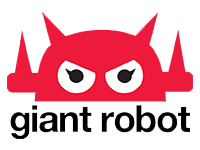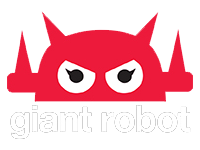281_Anti-Nuke’s Art and What it Means For Japanese Politics.
 Art has the power to provoke ideas and inflame passions. Politics and art, in this way, go hand in hand. When an event of historical magnitude occurs, it’s only a matter of time before an artist emerges and addresses it.
Art has the power to provoke ideas and inflame passions. Politics and art, in this way, go hand in hand. When an event of historical magnitude occurs, it’s only a matter of time before an artist emerges and addresses it.
Prime Minister Shinzo Abe’s economic plan (Abenomics) as the story of the hour in news circles, it’s easy to forget that Japan endured a nuclear catastrophe just 2 years ago. In March 2011, the Tokyo Electric Power Company’s Fukushima Daiichi Nuclear Power Plant underwent a partial meltdown from the 3.11 Earthquake and Tsunami.
Approximately 157,000 residents were forced to flee their homes due to radioactive contamination in Fukushima prefecture with little hope of ever returning. Critics blamed the disaster on negligence and incompetency concerning safety regulations willingly overlooked by TEPCO and the Japanese government.
Flash-forward to today and the public carries on as if it’s business as usual. The earthquake, tsunami, or even Fukushima rarely comes up in casual conversations. On the surface, it appears that the populace and Japanese government have forgotten the disaster altogether.
One artist hasn’t.
The man calling himself 281_Anti Nuke designed stickers, posters, and indiscreetly plastered them throughout Tokyo. His most recognizable piece is a small girl in a slicker with “I hate rain” printed beneath. It isn’t until you glimpse a nuclear trefoil inscribed beneath the text that its message dawns on you and all the events broadcasted from yesteryear return to you in a flood of regret.
His ‘mock’ propaganda is a sharp–albeit intrusive– reminder of the gravity of what happened in Fukushima not so long ago. It’s a tragedy that he claims the government created. It’s a tragedy that he believes they coerced the public to forget.
Giant Robot Magazine previously reported sightings of his art in October 2011. Back then, information on 281 was scarce. Two years later, major outlets like The Economist, Financial Times, and Wall Street Journal have featured photos of his art in articles about national politics. Others like Japan Rolling Stones, Channel 24, and The Japan Times have even interviewed the enigmatic artist himself.
Besides his distrust of the Japanese government and his drive to hold them accountable, almost no one knows anything about 281′s personal life–let alone his actual name.
The retrospective at the Pink Cow bar in Roppongi on June 6th, 2013, was held to raise awareness of his work and offer a little more insight into the artist himself. The retrospective hosted a preview screening of filmmaker/photographer Adrian Storey’s self-titled documentary about 281.
Storey formerly featured some of 281′s designs in a segment that he submitted for Ridley Scott’s Japan in a Day documentary. 281 contacted Storey and requested permission to use the images from Japan in a Day for his own personal website. Story agreed on the condition that 281 consent to be the subject of the aforementioned self-titled documentary. Filming began in January of this year.
Stroey’s documentary not only depicted the platform for 281’s opposition to the corruption of Japanese politicians and nuclear industry, but also further illuminated some of the seedier undercurrents of Japanese politics and why 281′s anonymity is so imperative.
People known as the Netto Uyoku (Right-wing netizens) accuse 281 of secretly being a Zainichi Korean (Korean born in Japan) and vandalizing public property. Certain right-wing groups in Japan often associate foreigners and the Zainichi with delinquency and organized crime.
The preview featured numerous posts on message boards from the Uyoku discussing 281’s art. One in particular contained a disturbing rant from someone reacting with a wish to kill all minorities in Japan. 281 doesn’t admit it explicitly, but several of these posts accumulated to enough threats against him that he temporarily shut down his Twitter and personal webpage.
He was also originally slated to attend the retrospective and answer questions from attendants, but backed out at the last minute and held a Skype conference with visitors instead.
Ryan Roth, his manager, explained that prior to the gathering, he took precautions to ensure 281′s safety. “We had to make sure that there was a back exit,” Roth said. “Just in case things got hairy.” There was a lingering anxiety that one of the Netto Uyoku would appear and start trouble.
Roth took in interest in 281’s art after seeing it on the streets of Tokyo. He contacted 281 online and they agreed to meet sometime between July and August, and Roth offered to represent him through his art investment company, Roth Management. Because he is a client, Roth is one of the few people who have seen 281’s face and know him by his true name.
As severely paranoid as that sounds, it’s not without precedent. The popular Japanese image board, 2Chan, is notorious for its death threats posted liberally throughout its forums. It reached a point where the police had to intervene and crack down on these incidents. As with the case of the “Neo-Mugicha Incident” and imitations of the “Akihabara Massacre,” which originated as threats online, observers have every reason to take these threats seriously.
Additionally, even though the image board concentrates mainly on anime and popular culture, David W. Marxy of the Neojaponismé blog pointed out that posts on the board possess a heavy footed right-wing bent.
As a result, there’s a comically predictable tendency for Japanese right-wingers to accuse people with disagreeable opinions of being “Secret Koreans” much in the same way that they responded to 281’s art. For example, online netizens have erroneously accused New York Times journalists Hiroko Tabuchi and Norimitsu Onishi when they wrote about historical tensions between Japan and South Korea.
This and the threats inveighed against 281 even had Storey treading lightly around the topic of the Uyoku in the documentary. “Notice that I simply depicted what they wrote,” Storey said. “I didn’t take any of it out of context.”
All of this adds up to a dire portrait of Japan’s political dynamics. A poll for the Asahi Shimbun claims that 59% of the people oppose Abe’s nuclear power policy. This means that the Uyoku defending this policy are in the minority.
Admittedly, the Netto Uyoku already dwell on the fringes of society and demographically don’t possess a dominant votership in Japanese elections.
And that’s precisely the problem. It doesn’t bode well for a country if the tyranny of the few can bully someone with a dissenting opinion into silence. Despite the high number of people who share 281’s views on nuclear energy, Prime Minister Shinzo Abe’s cabinet seems intent on restarting the nation’s reactors again in the near future. While economic matters are the forefront of the Japanese public’s concerns, one has to wonder what will happen if “Abenomics” fails to deliver. Prime Minsister Abe may be enjoying a high approval rating at the moment, but he’s arguably done little to placate his countrymen’s anxieties about the hazards of nuclear energy. One has to wonder whether voices like 281’s will grow louder once the intoxicating effects from Abenomics dissipate and bring a looming hangover.
A special thanks to Ryan Roth of Roth Management who represents 281_Anti-Nuke. To learn more about Roth Management, visit: http://roth-mgmt.com/. All inquiries to the artist should be directed to info@roth-mgmt.com.
For more information, visit: http://www.281antinuke.com/. Follow 281 on Twitter @ 281_.
A trailer for Adrian Storey’s documentary can be accessed here. To learn more about Storey and his work, visit: http://www.uchujin.co.uk/. Follow him on Twitter @Uchujinphoto.





